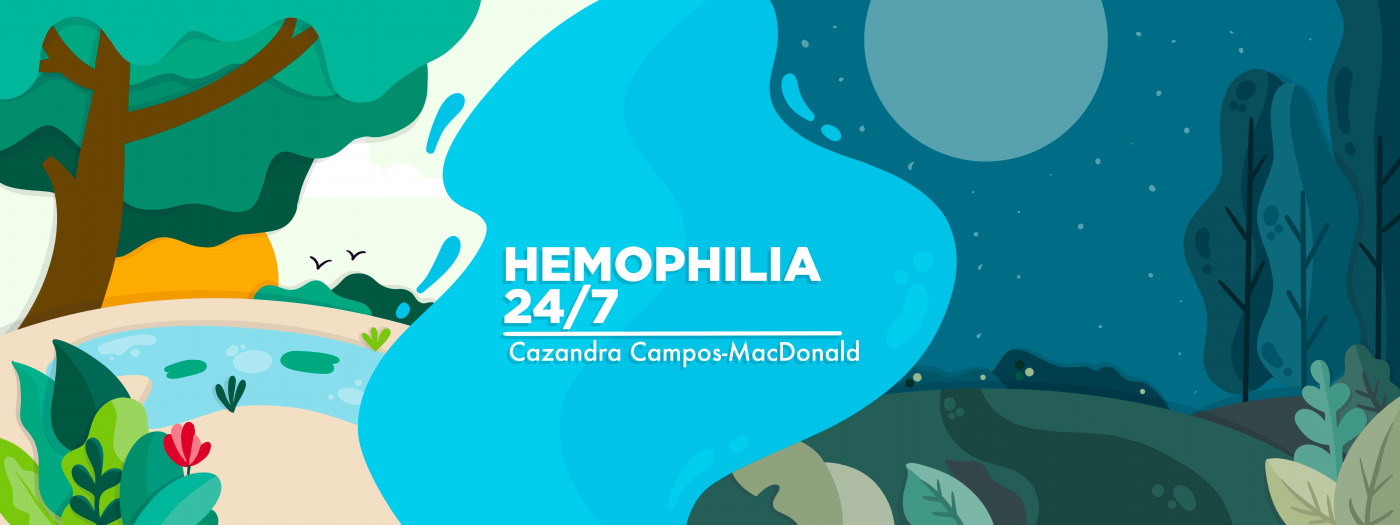Ever-present, fiery pain is difficult for young people with hemophilia
Like smoldering remains that could reignite, it's not easy to relieve what hurts

I live in what’s considered the high desert. At over 4,000 feet above sea level, my community experiences cold winters and hot summers. When the monsoon season brings rain, however, the desert transforms from a dry, brown landscape to one rich with green and flowering cacti.
The one unfortunate part of living in New Mexico in the spring is the wind. Hurricane-force winds are not uncommon, and with them come the tumbleweeds. It’s fun to watch the little ones flying across the road as they move to become more prominent with every tumble and roll on the land. Getting rid of the dried brush is typically handled by burning piles of weeds, debris, and, yes, tumbleweeds.
With an enormous amount of brush to be burned in my backyard, I looked forward to getting rid of a big pile of it to prepare to plant my garden. It always amazes me how quickly the dried brush catches the flame of a match, and within seconds the dried branches and prickly thorns wither before my eyes. Loud pops from dried-out seeds and berries are sometimes shocking as they fly into the sky.
After this particular session of weed burning, I thought about my youngest son, Caeleb, and his chronic pain.
Pain is like a tumbleweed, especially when it’s blazing. It starts with only a few little branches or twinges of pain. It’s not enough to be a problem, but it’s a warning sign. Water is thrown on what’s left of the flames coming from burning weeds and bushes, yet the fire isn’t entirely out. The embers are still hot and red, with smoke billowing from the attempt to extinguish the fire. The smoldering means the fire can start back with a vengeance at any time.
Pain medication is like throwing water on a fire. The medicine may work for a short amount of time, but it’s temporary. The water doesn’t necessarily work well on the smoldering coals, either. It takes buckets and buckets of water to douse the hot spots, but there’s always the thought that the fire might reignite.
How do those with complications from hemophilia, like Caeleb, deal with chronic pain? For my son, pain medication is not his preference. While throwing the “water” of medicine at the “fire” of pain can help, it can also impair my son’s focus. He’d rather have pain than relief if relief means he’ll face other problems.
As Caeleb continues to heal from ankle surgery, I visualize the hot embers of the fire that are ever-present. Sometimes they’re a little less noticeable, and other times they’re so hot that they’re about to reignite a huge fire.
Pain management is not a one-size-fits-all model. As a woman who also has chronic pain, I’ve learned how to manage it over the years. When a teenager like Caeleb is faced with the same issue, however, it’s much more challenging to comprehend managing pain.
Improvements in hemophilia care, like new treatments, allow many to live with fewer complications, yet those who have endured joint bleeds and complications, like Caeleb, have a different story.
I just want him to know that he’s more than his pain.
Note: Hemophilia News Today is strictly a news and information website about the disease. It does not provide medical advice, diagnosis, or treatment. This content is not intended to be a substitute for professional medical advice, diagnosis, or treatment. Always seek the advice of your physician or another qualified health provider with any questions you may have regarding a medical condition. Never disregard professional medical advice or delay in seeking it because of something you have read on this website. The opinions expressed in this column are not those of Hemophilia News Today or its parent company, Bionews, and are intended to spark discussion about issues pertaining to hemophilia.








Leave a comment
Fill in the required fields to post. Your email address will not be published.